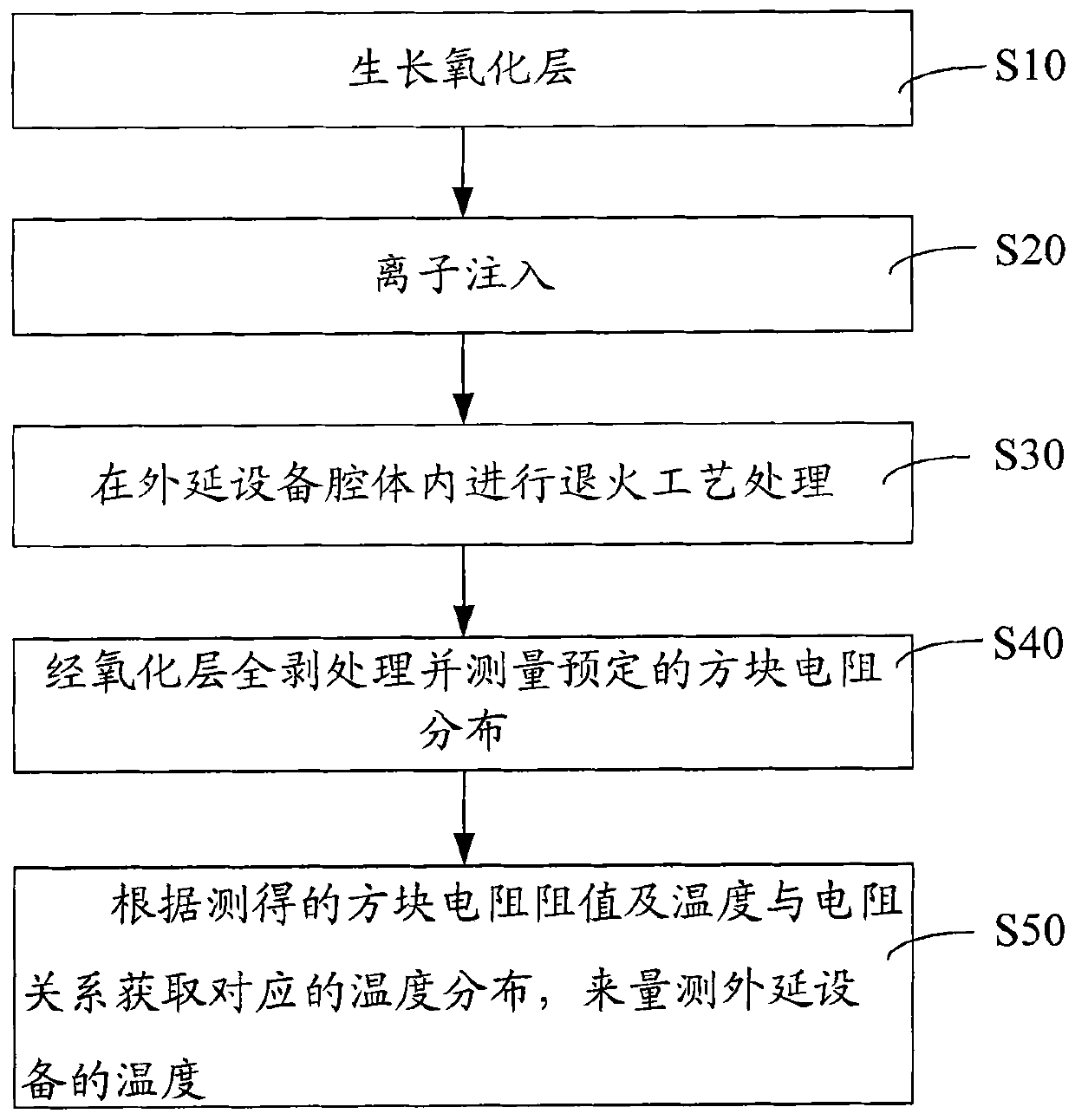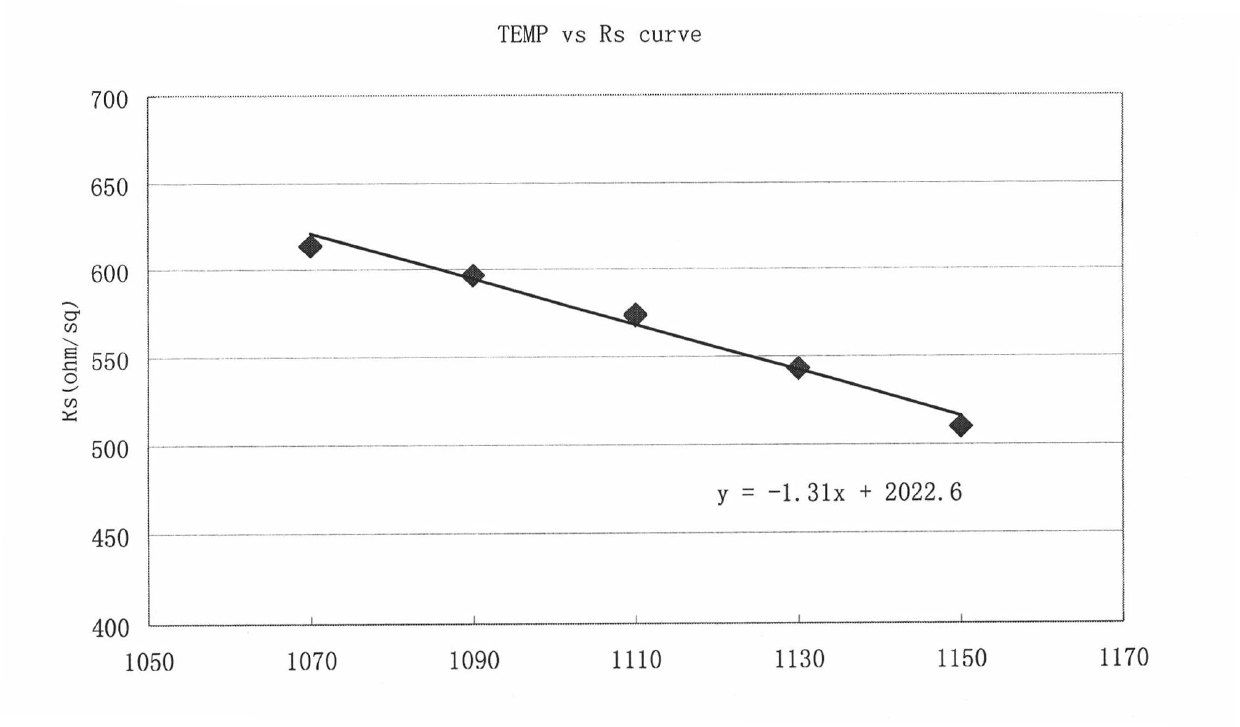Method for measuring temperature of cavity of epitaxial equipment
A technology of epitaxy and equipment, applied in thermometers, thermometers with directly heat-sensitive electric/magnetic elements, measuring devices, etc., can solve problems such as inability to accurately measure temperature distribution, achieve high reliability and accuracy, and operate Simple, Data-Comprehensive Effects
- Summary
- Abstract
- Description
- Claims
- Application Information
AI Technical Summary
Problems solved by technology
Method used
Image
Examples
Embodiment Construction
[0022] figure 1 It is a flow chart of a method for measuring the cavity temperature of an epitaxial equipment in an embodiment, including the following steps:
[0023] Step S10, growing an oxide layer.
[0024] Prepare a wafer, use a P-type sheet with a substrate resistivity of 15-25 ohm·cm, and then grow an oxide layer on the wafer. The thickness of the oxide layer can be In this embodiment, the thickness of the oxide layer is
[0025] Step S20, ion implantation.
[0026] Ion implantation is performed on the wafer on which the oxide layer has been grown. Because P+ ions are implanted on the high-resistance substrate, the P+ ions are activated to release electrons e- during the high temperature process. The higher the temperature is, the more electrons e- are released, and the lower the sheet resistance. In one embodiment, when performing P+ ion implantation, the energy is 80 kiloelectron volts (KeV), and the dose / concentration is 6×10 per square centimeter. 13 atoms,...
PUM
 Login to View More
Login to View More Abstract
Description
Claims
Application Information
 Login to View More
Login to View More - R&D
- Intellectual Property
- Life Sciences
- Materials
- Tech Scout
- Unparalleled Data Quality
- Higher Quality Content
- 60% Fewer Hallucinations
Browse by: Latest US Patents, China's latest patents, Technical Efficacy Thesaurus, Application Domain, Technology Topic, Popular Technical Reports.
© 2025 PatSnap. All rights reserved.Legal|Privacy policy|Modern Slavery Act Transparency Statement|Sitemap|About US| Contact US: help@patsnap.com



